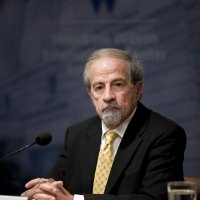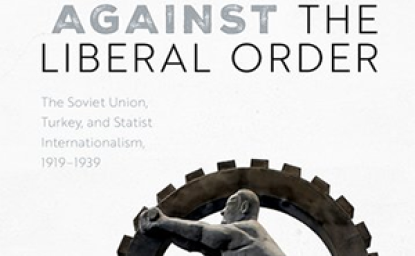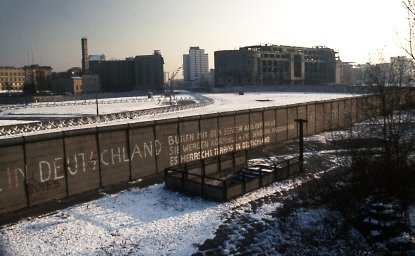Exploring Nuclear Latency




Report of a Workshop on Nuclear Latency
Woodrow Wilson International Center for Scholars
Washington D.C. | October 2, 2014
Joseph F. Pilat, Los Alamos National Laboratory[1]
Introduction
Nuclear latency can be viewed as the possession of many or all of the technologies, facilities, materials, expertise (including tacit knowledge), resources and other capabilities necessary for the development of nuclear weapons, without full operational weaponization. Technically, latency derives from the dual-use nature of the atom. The issue also has to be seen historically – involving the full range of capability possessed by aspiring, existing and former nuclear-weapon states, and the possible diffusion of nuclear-weapon relevant information via a number of outlets, including non-state nuclear supply networks, the Internet and other means.
Nuclear latency has been an issue for nearly seven decades. Concerns about latency in the form of the possible misuse of civilian nuclear power programs for military purposes were on the minds of the authors of the Acheson-Lilienthal Report and the Baruch Plan. In this context, nuclear latency was seen to pose a technological threat that could result in strategic surprise. Although the threat emanating from a single weapon or a small arsenal is not seen in the same way it was in the 1940s, there remains a concern that some limited number of nuclear weapons could dramatically change the strategic equation. Iran’s nuclear program has raised the issue at one end of the continuum; revitalized interest in disarmament at the other.
Neither the Nonproliferation Treaty nor other existing nonproliferation and arms control treaties directly address latency, and the concept is not fully encompassed and explored in the policy debates over nuclear weapon proliferation or the treaties, institutions and norms designed to address these threats through nuclear nonproliferation, arms control and disarmament. From the perspectives of both nonproliferation and disarmament, latency is a reality that can be seen as positive or negative but in any case complicates the achievement of the objective. Is nuclear latency unique? Is latency a condition for nuclear-weapon states and for many non-nuclear-weapon states? Can it be a strategy for proliferant states? Can it be a viable nonproliferation strategy? How has latency been seen and addressed in the past? Will latency be a positive or negative for future efforts to control or eliminate nuclear weapons? To what extent would latency exist in a nuclear–free world? To explore these and other issues from historical and policy perspectives, the Los Alamos National Laboratory in cooperation with the Woodrow Wilson International Center for Scholars held a workshop on “Nuclear Latency” at the Wilson Center in Washington, DC, on October 2, 2014. The following is a summary report of the discussion.
Exploring Nuclear Latency
Among the participants, there was widespread recognition that nuclear latency is an important but understudied issue with significant implications for nonproliferation, arms control and disarmament. It was argued that nuclear latency was a special case of strategic latency.[2]
There was some discussion of the definition of nuclear latency. Some argued that a precise, agreed‐upon definition was needed, while others contended that a general, inclusive definition was far more useful.
In this context, there was a recognition that latency is difficult to characterize and measure. One participant stated that arguments tying nuclear latency to civil nuclear power programs could be seen as being in opposition to civilian nuclear power production, and that this issue was especially significant at a time when increased use of nuclear power was needed to respond to global climate change. Others argued that the latency that derives from the dual use nature of the atom – and hence from use in civil nuclear power programs – were technical realities that could not be avoided.
Among the participants, it was recognized that nuclear latency itself did not say anything about intentions, and that looking at intentions as well as capabilities was essential in assessing proliferation risks. However, others argued that the future of nuclear power would not be decided solely by a technical assessment of proliferation‐sensitive capabilities that could be misused. Rather, the future of nuclear power would be decided on economic, energy and environmental reasoning that takes the real risks of proliferation and terrorism into account.
In this discussion, one participant highlighted the differences between “latency” and “hedging”, arguing that they are both points along a continuum running from proliferation to foregoing nuclear weapons. He noted that hedging involved work on other capabilities such as weaponization activities, beyond the acquisition of materials and capabilities directly associated with latency.
There was general agreement that latency is a reality for many nonnuclear-weapon states today, primarily as a result of spreading nuclear energy technologies and programs. Nuclear capabilities are now widespread and will continue to increase as nuclear-power programs grow worldwide, especially those that involve direct-use nuclear materials such as plutonium and highly enriched uranium (HEU).
Access to materials, technology and expertise is growing, eroding past barriers to weapons, not only because of the Treaty on the Nonproliferation of Nuclear Weapons (NPT), but more so because of technology evolution, diffusion and globalization.
It was recognized that the NPT allows latency and hedging, and one participant argued that this was essential for its entry into force and its wide acceptance.
One participant noted that the focus of attention has been on indigenous capabilities, but the impact of external assistance—and of stolen technology or materials—also needs to be considered and could be decisive in defining a state’s level of latent capacity. In this context, one participant noted that R&D time frames need to be accounted for, along with those for weaponization activities that may be pursued in parallel or sequentially with material production.
It was argued by some participants that countries without the urgency that drove the Manhattan Project may be satisfied with latency. Many participants held that latency can be a strategy for some states, including those who find ambiguity to be an optimal response to their security concerns. Furthermore, a latency strategy potentially avoids international reactions ranging from diplomatic isolation, to sanctions, to military intervention. In such a case, a state could hedge against a deteriorating regional or global security environment and respond with weaponization only if required, although the time needed for an effective response is unclear and potentially insufficient. There was some discussion, but no consensus on the issue of whether corporations and other nonstate actors could have latent capability.
Hedging may be undertaken by states to leverage their ability to receive security assurances, while others may choose latency as a step on the path to direct acquisition or a bomb. In any case, the group recognized that hedging in any fashion builds and maintains the capacity to go nuclear. In this context, one participant highlighted the country-specific and structural factors that drive proliferation as well as proliferation threat assessments. Another participant noted the controversies over motivation based on limited facts that have occurred in the past, and are occurring now over Iran but also over Japan and Brazil. It was also noted that motivations and objectives can change, and have changed, over time for many states.
Both the importance and the difficulty of understanding motivations and intent were frequently raised in the discussions. States' weaponization, delivery and support capabilities are critical and provide an indicator of intent, albeit one with low visibility and high ambiguity. Moreover, one participant raised the issue of the International Atomic Energy Agency’s (IAEA’s) limited mandate to safeguard weaponization activities that do not directly involve nuclear material.
It was argued that Iran’s nuclear program is driven by many motivations, including prestige, regime survival and domestic politics, where politicians criticize any efforts to compromise in attacks on their opponents. According to several participants, this suggests that there is limited ability to influence Iran to give up nuclear capacity. It would be highly unlikely that Iran would surrender a significant degree of nuclear latency to get a deal, despite complex domestic politics in which not all factions support going nuclear.
It was widely argued that Iran was pursuing a latent capability. One participant argued that if latency was all that interested Iran, the international community could affect its cost-benefit calculations. Others challenged this assessment.
It was noted that breakout, which is directly linked to latency, is the overarching concern. However, Iran challenges regional security and the global nuclear order even if its nuclear capacity remains latent. The greatest threat posed by an Iran with latent capacity, if not a nuclear-armed Iran, is not the threat or use of nuclear weapons against other states, but the prospect that it would enhance Iran’s ability to pursue regional hegemony and destabilizing, low-level conflict, including increased support for subversion, terrorism and interference in the affairs of other regional states. If this is the goal, ambiguity could serve Iran well.
Several participants argued that it was possible that Iranian interests could be achieved with latency. For Iran, a strategy of latency appeared to have many of the benefits of nuclear weapons while avoiding some of the diplomatic, economic and other costs of operational weaponization. One participant argued that Iran has not yet decided to develop nuclear weapons amid complex domestic politics where some favored weaponization and others the so-called “Japan model.” Latency appears to have emerged as the compromise stance. On the other side, one participant argued that STUXNET bought some time, but may have also increased Iran’s resolve to continue its activities; another participant argued that the threat of a military strike was essential to preventing Iran from taking any further steps toward weaponization.
One participant argued that Japan had never made a decision to develop nuclear weapons, but that pursuit of nuclear technology and capability was undertaken for industrial and prestige reasons. Among the participants, Japan was widely viewed as having a significant latent capability due to its nuclear fuel cycle. In addition, Japan possessed delivery systems and human expertise. Complicating the issue of latency was the recognition of the importance of creating a secure second strike capability vis-à-vis China if Japan were to go nuclear, as well as normative and other issues surrounding long-standing Japanese efforts to promote nonproliferation and disarmament. One participant argued that after Fukushima, Japan was on the path to becoming a “nuclear moratoria” state. It would have strategic decisions to make, including whether it needed to revive its nuclear power program not only because of energy requirements but also because of the pressure of hedging against so many nuclear powers in the region.
Brazil has had a long-standing fuel-cycle program administered by the Navy that many observers regarded as offering a latent capability. Brazil’s commitment to naval propulsion was noted. However, one participant argued that Brazil has no security issues and that a program run by the military is not necessarily a military program. Only an Argentine bomb could lead Brazil to a bomb, he argued. It was argued by another participant that Brazil sees the international nuclear order as illiberal and looks at Iran’s problems in the context of its own over the last several decades.
It was recognized that latency will exist, along with some level of hedging, in a nuclear-weapon–free world. Shutdown nuclear-weapon programs can be reconstituted; civil nuclear programs can be used, or misused, to make weapons by states and possibly even non-state actors. One participant argued that disarmament could make hedging the norm.
In the disarmament arena, it has been argued that latency can offer a reduced risk of accidental or unauthorized use on the positive side. However, latency also allows a high level of crisis instability and the prospect of disarmament being rapidly reversed. It was recognized that nuclear reversal, or roll back, has occurred often in recent history, from South Africa to Iraq and Libya, but one participant argued that the process was often uncertain, murky and ultimately reversible. A broader discussion of the issue of irreversibility was raised. Latency certainly complicates this central issue of arms control and disarmament.
A frequent assumption in the debate is that latent capabilities enable disarmament and that nuclear-weapon states can choose whether or not to rely on these capabilities as a hedge against disarmament. Whatever one’s view of disarmament, this argument has problems and uncertainties. More specifically, it is argued by some observers that the latent capabilities that existed during reductions and remained after disarmament would deter in and of themselves.
The argument that latency will have a positive deterrent effect without nuclear forces in being is not clear or compelling. At any point short of a global zero, most nuclear powers would likely view reliance on latent capabilities as posing unacceptable risks. Even in a nuclear-weapon-free world, politicians and bureaucracies would be resistant to any regime without a developed protocol that precisely delineated prohibited capabilities and ensured allowed capacity was not asymmetric and could be fully resourced and exercised. There is no question that at least some aspects of such an arrangement would be essentially unverifiable and would have to be addressed if at all as a cooperative or confidence building measure if at all possible.
In practice, these capabilities could in an agreement be merely recognized; sanctioned and preserved; or proscribed and dismantled to the extent possible.
If virtual capabilities (without forces in being) are to serve as a hedge--albeit one of uncertain value--this would require, among other things, human capital and facilities that cannot simply be mothballed. Both would need to be exercised. If this approach were to be pursued, it was argued by one participant, it would require an ambitious program for maintaining capability. The 2010 Nuclear Posture Review (NPR) called for a sound Stockpile Management Program for extending the life of U.S. nuclear weapons in order to ensure a safe, secure, and effective deterrent without the development of new nuclear warheads or further nuclear testing.
The NPR declared that “the United States will not develop new nuclear warheads. Life Extension Programs (LEPs) will use only nuclear components based on previously tested designs, and will not support new military missions or provide for new military capabilities.”[3]
Although modernization of the nuclear infrastructure has been criticized as inconsistent with our arms control and nonproliferation objectives, the NPR argues it is essential to realize those objectives:
By certifying the reliability of each weapon type we retain, the United States can credibly assure non-nuclear allies and partners they need not build their own, while seeking greater stockpile reductions than otherwise possible. Further, a corps of highly skilled personnel will continue to expand our ability to understand the technical challenges associated with verifying ever deeper arms control reductions.
Through science and engineering programs that improve the analysis of the reliability of our warheads, we also enhance our ability to assess and render safe potential terrorist nuclear devices and support other national security initiatives, such as nuclear forensics and attribution. Expert nuclear scientists and engineers help improve our understanding of foreign nuclear weapons activities, which is critical for managing risks on the path to zero. And, in a world with complete nuclear disarmament, a robust intellectual and physical capability would provide the ultimate insurance against nuclear break-out by an aggressor.[4]
Moreover, by modernizing the aging U.S. nuclear weapons-supporting facilities and investing in human capital, the NPR argued, “the United States can substantially reduce the number of stockpiled nuclear weapons we retain as a hedge against technical or geopolitical surprise, accelerate the dismantlement of nuclear weapons no longer required for our deterrent, and improve our understanding of foreign nuclear weapons activities.”[5]
The debate was said to be more complex than it might appear. Any hope for realizing a long-term technological solution is put into question by the limits and issues of the US Stockpile Stewardship Program as well as by current and anticipated future funding levels. Moreover, the acceptance of such a strategy as “disarmament” by nonnuclear-weapon states and nongovernmental organizations is by no means certain. It has also been criticized by abolitionists. This approach may appear threatening, and reinforces long-standing concerns about crisis and arms race instability as numbers are reduced, and at zero. Latency increases this potential for instability.
While the discussion did not lead to any consensus conclusions, there was wide agreement on the need for follow-on work, including exploring additional historical cases and assessing the impact of evolving technologies on latency.
Agenda
October 2nd, 2014
08:30 Arrival and Light Breakfast
09:00 Welcoming Remarks
09:30 Nuclear Latency: History, Concepts, and Issues
Michael Nacht University of California, Berkeley
Ariel Levite Carnegie Endowment for International Peace
Alexander Montgomery Reed College
11:00 Break
11:15 Nuclear Latency, Weapons, and Energy Programs
Raymond Jeanloz University of California, Berkeley
William Charlton Texas A&M University
Joseph Pilat Los Alamos National Laboratory
12:45 Lunch
13:45 Historical Case Studies: Brazil, Japan, and Iran
Matias Spektor Fundação Getúlio Vargas
Takaaki Daitoku Northwestern University
Aniseh Bassiri Tabrizi King’s College London
15:15 Break
15:30 Historical Lessons and Implications for Nonproliferation and Disarmament
Olli Heinonen Belfer Center, Harvard University
Robert Litwak The Wilson Center
Mark Fitzpatrick International Institute for Strategic Studies
17:00 Reception
[1] The views expressed are the author’s summary of discussions and are not the views of the Los Alamos National Laboratory, the National Nuclear Security Administration, the Department of Energy or any other agency. The views should also not be construed to be those of any individual participants.
[2] Strategic latency is a critical national security issue involving the spread of potentially high-leverage, dual-use science and technology in a globalized world. Science, technology and engineering advances in such areas as nanotechnology, materials science, advanced manufacturing and biotechnology pose fundamental challenges. Because prospective threats from these advances are complex, cutting edge, decentralized and by definition not well characterized, they pose a real possibility of strategic and technological surprise. However, surprise can also come from older dual-use technologies, especially when used in novel ways.
[3] Nuclear Posture Review Report (Washington, D.C.: US Department of Defense, April 2010), at http://www.defense.gov/npr/docs/2010%20nuclear%20posture%20review%20report.pdf.
[4]Ibid.
[5] Ibid.
Author

Program Manager, National Security Office, Los Alamos National Laboratory

Nuclear Proliferation International History Project
The Nuclear Proliferation International History Project is a global network of individuals and institutions engaged in the study of international nuclear history through archival documents, oral history interviews, and other empirical sources. Read more


Cold War International History Project
The Cold War International History Project supports the full and prompt release of historical materials by governments on all sides of the Cold War. Read more


History and Public Policy Program
A leader in making key foreign policy records accessible and fostering informed scholarship, analysis, and discussion on international affairs, past and present. Read more




